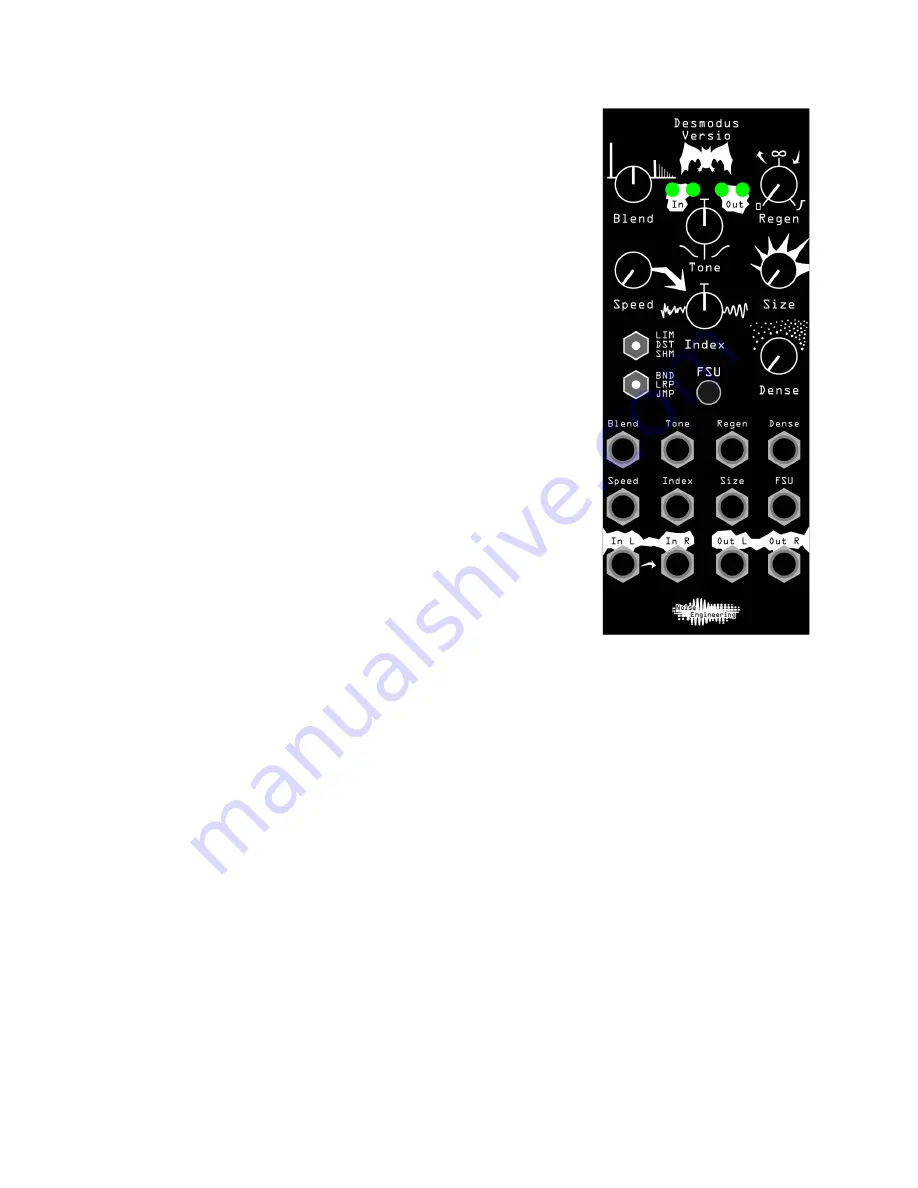
Input and output
voltages
All CV inputs expect 0-5v. All pots act as offsets and sum
with the input CV. The FSU gate input responds to signals
above +2 V.
The audio inputs clip around 16 V peak to peak.
Interface
Blend:
Dry/wet balance control. When turned fully left, the
unmodified input signal is passed through. Fully right, only
the processed signal is heard. Points in the middle give you
a mix of both.
A good way to hear Blend is with high Regen values and
Tone and Index set to 12 o’clock.
Tone:
A filter in the reverb tank. This is a bipolar control:
turning the knob to the left controls a lowpass filter, and to
the right controls a highpass filter. In the center, the filter is
disabled.
A good way to hear Tone is with high Regen values, and
Blend and Index at 12 o’clock.
Regen:
Amount of feedback in the reverb tank. Regen controls a wide range of tones
and behaviors.
All the way to the left, feedback is minimized. As you turn up to about 12 o’clock, DV
generates shorter reverbs, emulating smaller synthetic spaces. Past this point, the
reverb reaches 100% feedback, creating spaces with an infinite tail. Past 3 o’clock, the
infinite reverbs are ducked by new sounds at the input, creating sidechain-type effects.
Speed:
The speed of the internal LFO. The LFO can modulate the delay lines, and
modulation amount is controlled by the Index parameter.
A good way to hear Speed is with a low Size setting, Density and Index fully clockwise,
and a high Regen setting.
Index:
The amount of LFO sent to the delay lines that make up the reverb. This is a
bipolar control: in the center the LFO is disabled. To the left, the LFO modulates the
delay lines randomly. To the right, the LFO modulates the delay lines with a sine wave.
The Speed parameter controls the rate of the LFO.
A good way to hear Index is with a low Size setting, Density fully clockwise, Speed at 12
o’clock, and a high Regen setting.
3







